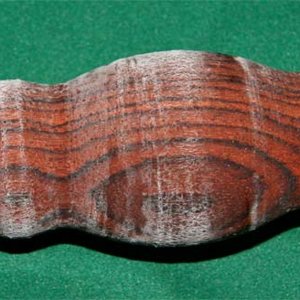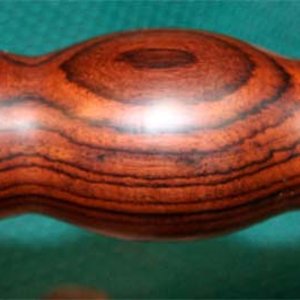TNX Hank,
Well, that would explain all my failed attempts with the finish even following the expert tutorials. Now I can quit wasting time & money trying. Year round temp in the downstairs living area is low 60s. MBR is mid 50s.
I wouldn't give up just yet. I've had success with GluBoost in cooler temps like you have. CA is much less temperature dependent than humidity dependent.
Also, just to make sure its understood, the curing of CA glue is in fact RELYANT on moisture. Without moisture, it won't cure...in fact, within a bottle, the general idea is that you want to keep the air as dry as possible to make sure the stabilizers in the glue don't catalyze within the bottle (i.e. put the cap back on as fast as you can.)
The process of curing is actually an outside-in process. Moisture on the surface you are bonding, as well as moisture within the air, will catalyze the reaction from both surfaces, inward towards the middle of the layer. The curing process will release both water vapor (which will in part deposit a small amount of moisture on the surface of the CA coat you just put down, which is in fact quite important for the next coat!) as well as formaldehyde (which is the crap that stings your eyes, and that's actually really bad, so try to avoid getting the fumes in your eyes!)
Temperatures cooler than 75 degrees might be problematic, at certain humidity levels, or maybe certain dewpoints. I don't know that there is any explicit temperature at which moisture suddenly becomes more of a problem, WITHOUT a link to the ambient humidity as well.
Too much moisture or too high of humidity, and the curing reaction can happen too fast. This can cause rippling of the surface if its just a bit out of balance, or it can cause frosting if its more widely out of balance. So you do want to avoid too much moisture. I've also encountered frosting that seemed to have nothing to do with humidity at all and may have been due to other chemicals in the applicator I was using (at one point I thought it may have been water in the foam, but the foam seemed to have some kind of very thin film of some kind of chemical on it, which I think was the actual problem.)
Anyway, I was curious what kind of applicator you were using before. It may be the applicator. It may also depend on the kind of glue. I didn't have great luck with other CA glues I tried using in the past. I switched to GluBoost middle of last year. Orginally had some issues, which may have been due to bad bottles, and maybe the applicators I was using. Once I sorted that out, I've been a fan. Being rather allergic to CA fumes, and not really a fan of CA in general, I have to say that I've been pleasantly surprised with the quality of GluBoost's formulation. Much lower odor, which in general seems to lower the risk of being exposed to its fumes, and it just seems to produce a nicer quality finish easier.


